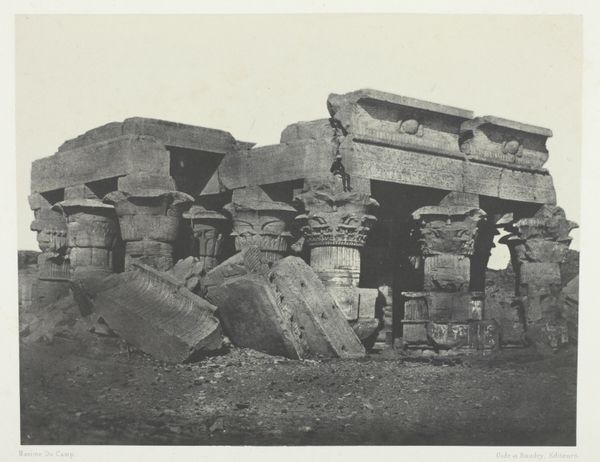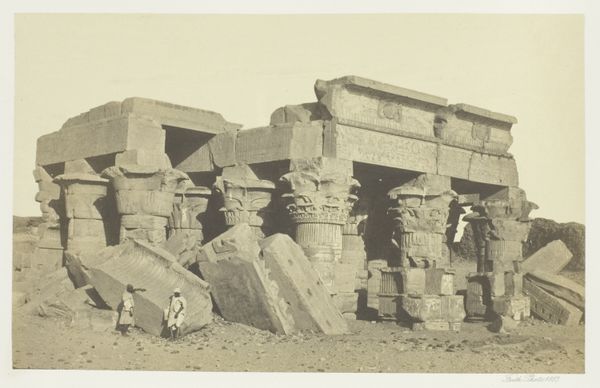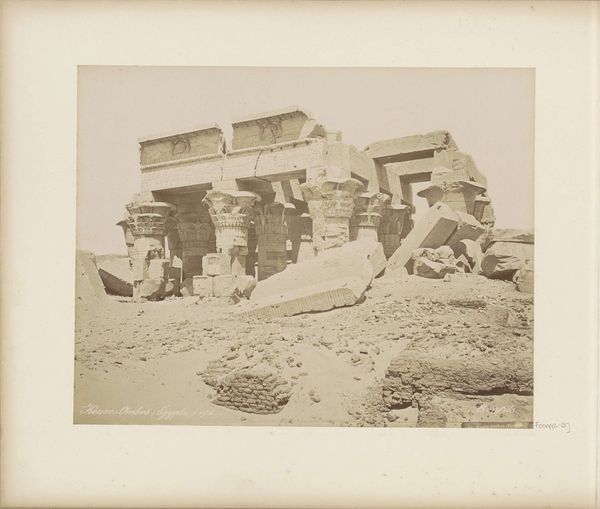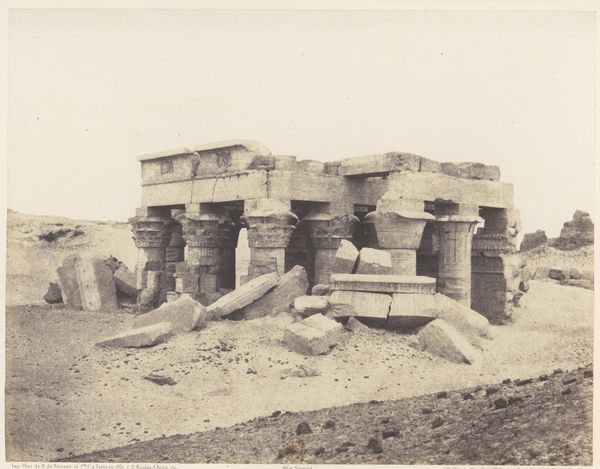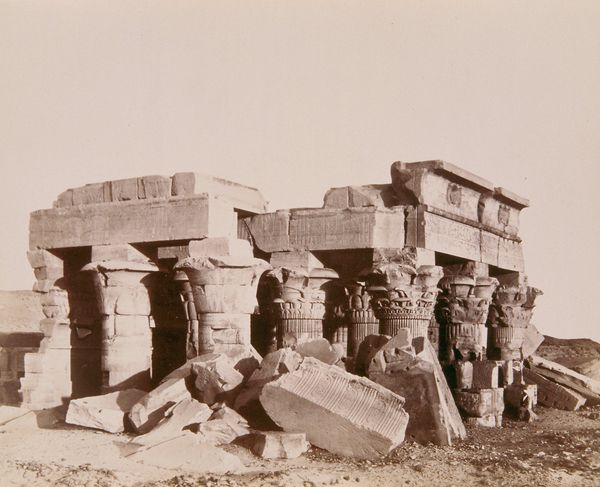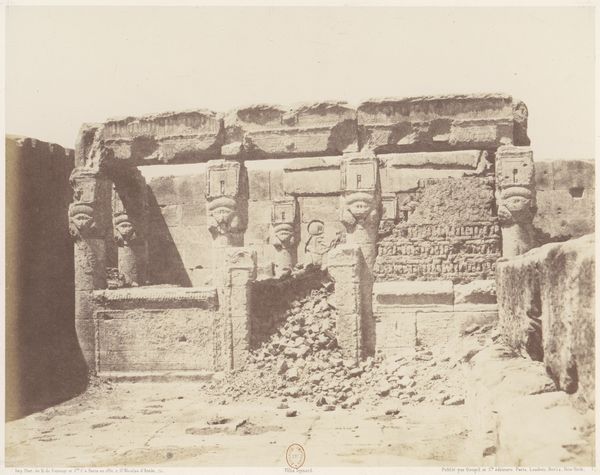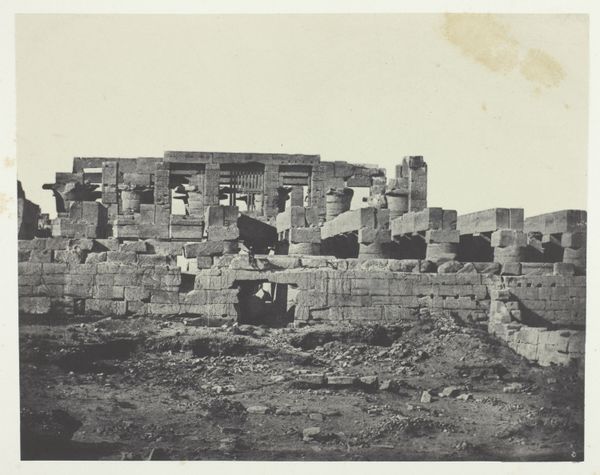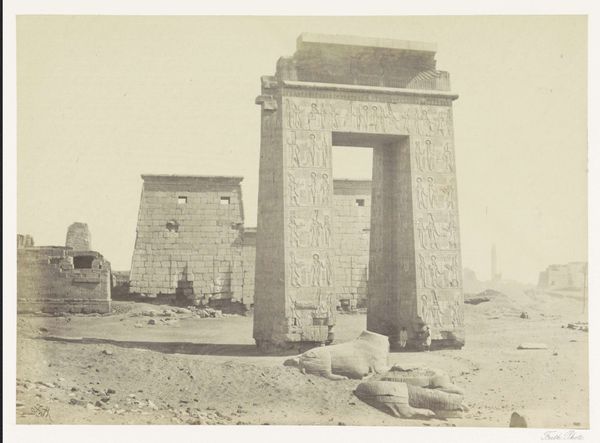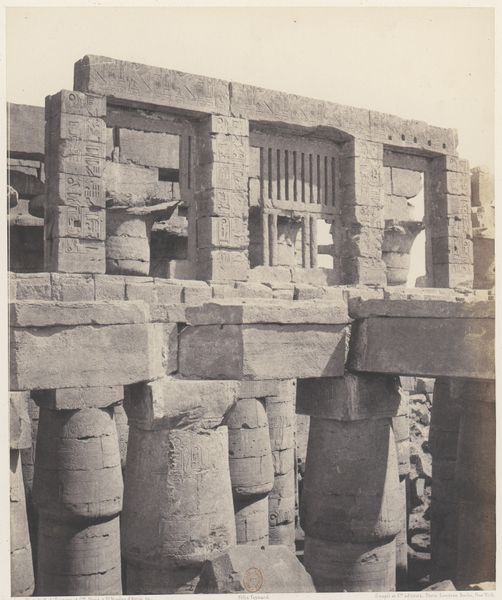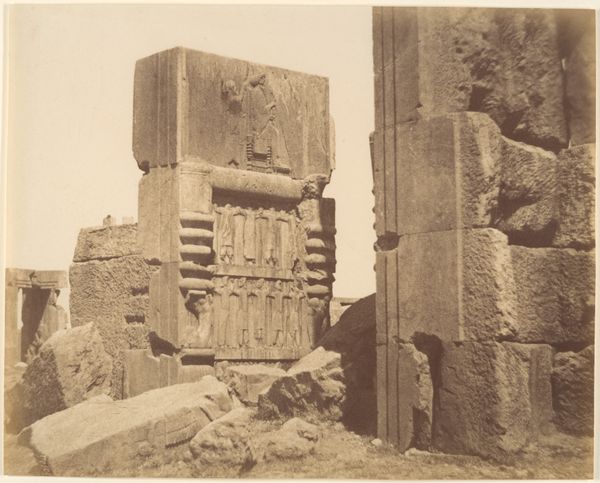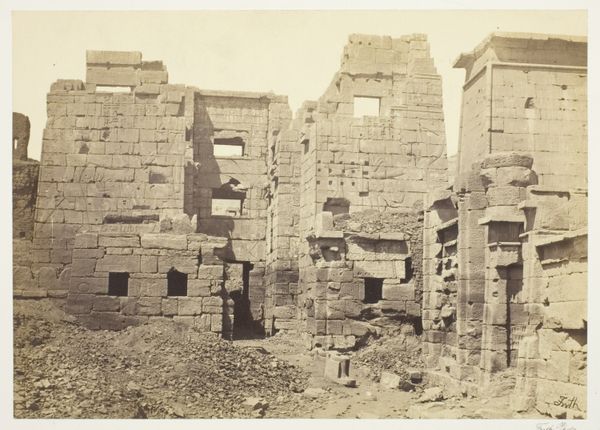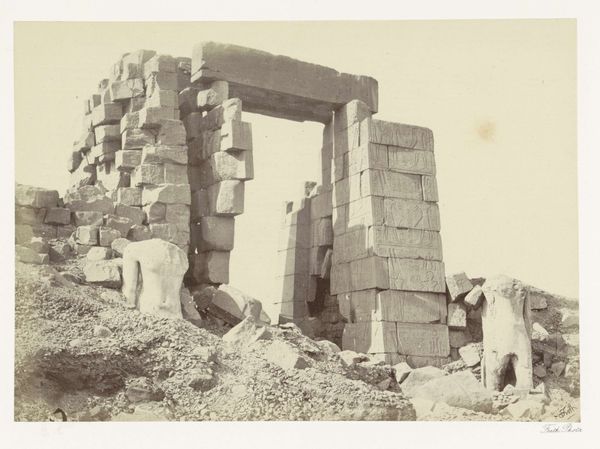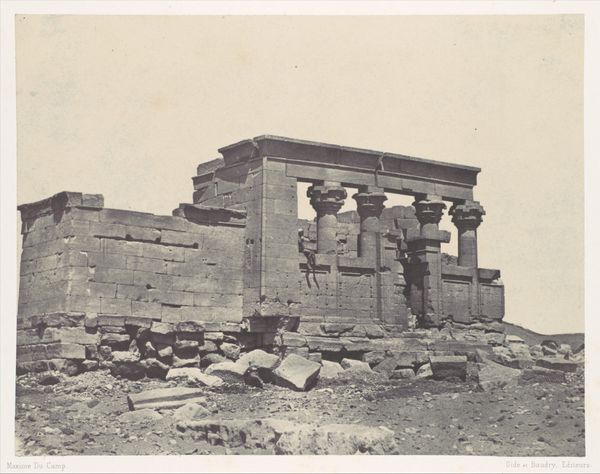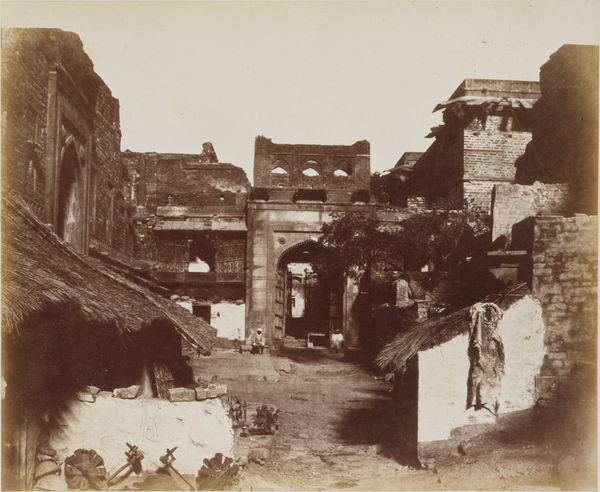
photography, site-specific
#
landscape
#
ancient-egyptian-art
#
photography
#
historical photography
#
ancient-mediterranean
#
site-specific
Dimensions: height 156 mm, width 224 mm
Copyright: Rijks Museum: Open Domain
Curator: Francis Frith’s photograph, taken before 1859, titled "Gezicht op de tempel van Kom Ombo," transports us to ancient Egypt. Editor: It strikes me immediately as a stark visual poem about time and ruin. The immense stones, the half-standing columns, all bathed in relentless light, evoke a powerful sense of vanished grandeur. Curator: Frith, as a photographer, was keenly interested in documenting landscapes and architectural marvels during the Victorian era, capturing both the sublimity of nature and the grandeur of human construction—particularly through the lens of British Imperial ambition. This photograph exists within that complicated context. Editor: Absolutely. The fragmented architecture speaks volumes. Those lotus and papyrus capitals, while beautiful, appear forlorn. They are symbolic remnants that still powerfully resonate despite their isolation. The human figures seated nearby are dwarfed; the ancient symbols easily outlive mortal lives. Curator: The composition itself guides our understanding. The angle emphasizes the scale of the temple remains, framing them against the empty sky, reinforcing its isolation and distance from modern viewers, despite it also being recorded in a modern form. Editor: I see visual echoes everywhere. The light and shadow patterns remind me of the Egyptian concept of duality – the balance of order and chaos. These tumbled blocks may look like a chaotic jumble, but their placement retains echoes of divine order. The photograph as a document underscores our own fascination with immortality through symbolism. Curator: The historical weight and artistic composition create a potent image, especially as we grapple with legacies of colonialism. It prompts questions about how we view, preserve, and even commodify these ancient places. Editor: Indeed. It is about rediscovering pieces of history that reveal humanity's long-lasting aspiration to forge meaning through lasting works—visible still despite the forces of erosion and change. What a lasting picture this is! Curator: Absolutely. Looking at this picture now has given me fresh insights, even after many years of examining Frith’s legacy. Editor: Me too. The dialogue between decay and the human impulse to leave a mark really stayed with me.
Comments
No comments
Be the first to comment and join the conversation on the ultimate creative platform.
